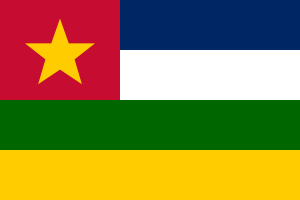Difference between revisions of "Language/Pulaar/Grammar/Gender"
m (Quick edit) |
m (Quick edit) |
||
| Line 61: | Line 61: | ||
|description=In this lesson, we will learn about the gender rules in Pulaar. We will look at how to identify the gender of nouns and how to use the correct gender when speaking or writing. | |description=In this lesson, we will learn about the gender rules in Pulaar. We will look at how to identify the gender of nouns and how to use the correct gender when speaking or writing. | ||
}} | }} | ||
==Related Lessons== | |||
* [[Language/Pulaar/Grammar/Conditional-Mood|Conditional Mood]] | |||
* [[Language/Pulaar/Grammar/Adjectives|Adjectives]] | |||
* [[Language/Pulaar/Grammar/Pronouns|Pronouns]] | |||
* [[Language/Pulaar/Grammar/Negation|Negation]] | |||
* [[Language/Pulaar/Grammar/Give-your-Opinion|Give your Opinion]] | |||
* [[Language/Pulaar/Grammar/Plurals|Plurals]] | |||
* [[Language/Pulaar/Grammar/Future-Tense|Future Tense]] | |||
* [[Language/Pulaar/Grammar/Questions|Questions]] | |||
{{Pulaar-Page-Bottom}} | {{Pulaar-Page-Bottom}} | ||
Revision as of 00:08, 1 March 2023
Hi Pulaar learners! 😊
In this lesson, we will learn about the gender rules in Pulaar. We will look at how to identify the gender of nouns and how to use the correct gender when speaking or writing. Let's get started!
Gender in Pulaar
In Pulaar, nouns are either masculine or feminine. This means that the gender of a noun affects the way it is used in a sentence. For example, the word for "book" is kitaabu in the masculine form and kitaaba in the feminine form.
Identifying Gender
The gender of a noun can usually be identified by its ending. Nouns that end in -u are usually masculine and nouns that end in -a are usually feminine. However, there are some exceptions to this rule. For example, the word for "teacher" is maccuɗo in the masculine form and maccuɗe in the feminine form.
Using the Correct Gender
When speaking or writing in Pulaar, it is important to use the correct gender for each noun. This is because the gender of a noun affects the way it is used in a sentence. For example, the verb haalata (to read) takes the masculine form when used with a masculine noun and the feminine form when used with a feminine noun.
For example:
| Pulaar | Pronunciation | English Translation |
|---|---|---|
| A ndaa haalata kitaabu | ɗaːndaa haːlaːta kiːtaːbu | He reads the book |
| A ndaa haalata kitaaba | ɗaːndaa haːlaːta kiːtaːba | She reads the book |
It is also important to note that adjectives must agree with the gender of the noun they are describing. For example, the adjective yaltuɓe (beautiful) takes the masculine form when used with a masculine noun and the feminine form when used with a feminine noun.
For example:
| Pulaar | Pronunciation | English Translation |
|---|---|---|
| Kitaabu yaltuɓe | kiːtaːbu jaːltuːbe | The book is beautiful |
| Kitaaba yaltuɓe | kiːtaːba jaːltuːbe | The book is beautiful |
Quiz
Test your knowledge of Pulaar gender rules with the following quiz questions:
- What is the word for "book" in the masculine form?
- What is the word for "teacher" in the feminine form?
- What is the adjective for "beautiful" in the masculine form?
- What is the adjective for "beautiful" in the feminine form?
Answers:
- kitaabu
- maccuɗe
- yaltuɓe
- yaltuɓe
Practice
To improve your Pulaar Grammar, you can also use the Polyglot Club website. Find native speakers and ask them any questions!
➡ If you have any questions, please ask them in the comments section below.
➡ Feel free to edit this wiki page if you think it can be improved. 😎
